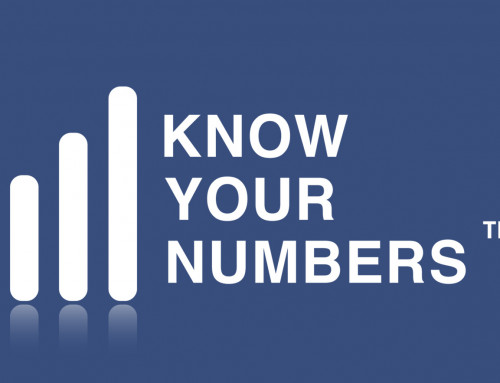Podcast: Play in new window | Download
Subscribe: Apple Podcasts | RSS
In this particular episode, you will learn
- How Debits and Credits Increase and Decrease in Accounting
Podcast transcript:
Topics
Increases and Decreases
Debits and Credits by Account
Assets
Expenses
Liabilities
Equity
Revenue
T-Accounts
Increases and Decreases
The debit and credit rules used to increase and decrease accounts were established hundreds of years ago and do not correspond with banking terminology. Careful, as banks refer to debit cards, credit cards, account debits, and account credits differently than the accounting system. Cash for example, increases with a debit.
The accounting equation diagram visually displays how accounts increase and decrease. The debits and credits diagram condenses this information.
Balance sheet accounts:
Assets: increase with a debit and decrease with a credit
Liabilities: decrease with a debit and increase with a credit
Equity: decrease with a debit and increase with a credit
Income statement accounts:
Revenue: decrease with a debit and increase with a credit
Expenses: increase with a debit and decrease with a credit
Debits and Credits by Account
Bellow, assets and expense accounts are presented first to aid beginners with memorization. Both these accounts increase with a debit and decrease with a credit.
Assets
Asset increases are recorded with a debit. First step to memorize: “Debit asset up, credit asset down.” Asset accounts, especially cash, are constantly moving up and down with debits and credits. The ending balance for an asset account will be a debit.
Increases and decreases of the same account are common with assets. Transfers from one cash account to another is recorded as a reduction of one cash account and increase to another cash account. An example of this is the transfer of cash from savings to checking. In the accounting record, the checking account is increased with a debit and the savings account is decreased with a credit. Note that these terms are exactly opposite of how the bank will refer to them!
Increases and decreases of the same account type are common with assets. An example is a cash equipment purchase. The equipment account will increase and the cash account will decrease. Equipment is increased with a debit and cash is decreased with a credit.
Let’s say a candy business makes a $9,000 cash purchase of candy to sell in the store. Cash in the bank is going to go down and candy will arrive at the store. Candy inventory is going to increase $9,000 with a debit and the cash account will decrease $9,000 with a credit.
Memorize rule: debit asset up, credit asset down
Expenses
Expense increases are recorded with a debit and decreases are recorded with a credit. Transactions to expense accounts will be mostly debits, as expense totals are constantly increasing. The ending balance for an expense account will be a debit.
Under cash basis accounting, expenses are recorded when cash is paid. Take the example of a cash purchase for a client lunch. Cash is going to go down and an expense goes up. Meals and entertainment expense account is increased with a debit and the cash account is decreased with a credit.
Under accrual basis accounting required by Generally Accepted Accounting Principles in the United States (US-GAAP), expense is recorded before cash is paid. Typically bills for items such as internet expense will be first recorded into accounts payable, a liability account. Accounts payable (AP) tracks all of the bills before they are paid for in cash. Say a $500 internet bill arrives for May service, but is not due until next month. The $500 internet expense is recorded in May with a debit and a $500 AP is recorded with a credit. When the bill is paid for in cash the next month, AP will decrease with a $500 debit and cash will decrease with a $500 credit.
Expenses are almost always going to be a debit transaction, but expenses can also be decreased with a credit as needed. Let’s say a business pays a gardener $1,000 cash for maintenance. Maintenance expense increases $1,000 with a debit and cash decreases $1,000 with a credit. Now assume the honest gardener returns, apologizing that there was a mistake and the services should have been $800. The gardener then returns $200 of cash to the business as a refund. To record this transaction, cash is increased $200 with a debit and expense is decreased $200 with a credit. The effect of this transaction is to reverse $200 of expense
Expenses such as depreciation and amortization are typically recorded with journal entries, due to accounting software limitations. These expenses are recorded to show the decline in value of certain assets over time and do not affect cash. Depreciation expense is recorded with a debit and the other side of the transaction is recorded to accumulated depreciation with a credit. Amortization expense is also recorded with a debit and the other side of the transaction is recorded to accumulated amortization as a credit. Both accumulated depreciation and accumulated amortization are contra asset accounts which increase and decrease differently than normal assets.
Memorize rule: debit expense up, credit expense down
Liabilities
Liability increases are recorded with a credit and decreases with a debit. This is the opposite debit and credit rule order used for assets. By definition, the rules of debits and credits mirror the accounting equation: Assets = Liabilities + Equity. In debit and credit terms, Asset debits = Liability credits + Equity credits. The ending balance in liability accounts will therefore be credits so that the equation will balance.
The most common liability to a business is accounts payable (AP), which comprises of money owed to providers of goods and services to the business, known as vendors. US GAAP requires accrual basis accounting that records expenses and revenue before cash is actually paid or received. Companies on the accrual basis accounting will record expenses as they are incurred. Bills for items such as internet expense will be first recorded into accounts payable, a liability account. Say the internet bill for $500 arrives for May, but is not due until the next month. The $500 expense is recorded in May with a debit and a $500 payable is recorded with a credit. When the bill is paid in cash next month, AP will decrease with a $500 debit and cash will decrease with a $500 credit.
Liabilities are constantly increasing and decreasing, but the ending balance will be a credit. Take the loan payable account as an example. Assume a business receives cash after taking a loan of $100,000. The cash account will increase $100,000 with a debit and the loan account will increase with a $100,000 credit. Principal payments will reduce the loan with a debit and increase with a credit.
Memorize rule: debit liability down, credit liability up
Equity
Equity increases are recorded with a credit and decreases with a debit. This is the opposite debit and credit rule order used for assets. By definition, the rules of debits and credits mirror the accounting equation: Assets = Liabilities + Equity. In debit and credit terms, Asset debits = Liability credits + Equity credits. The ending balances in equity accounts will therefore be credits so that the equation will balance.
The first accounting transaction a business has is typically an increase to cash and an increase to an equity account. Let’s say a business starts by issuing stock in exchange for $1,000,000 cash received from an investor. Cash increases with a $1,000,000 debit and equity increases with a $1,000,000 credit.
Profits and losses are recorded in the retained earnings equity account, typically on a quarterly and yearly basis. Just like common stock, the account increases with a credit and decreases with a debit. Retained earnings is not the same as cash, because it is based on net income or loss, not cash received. Assume a business has $950,000 net income, reported on the income statement. Retained earnings at the end of the accounting period will be increased with a credit of $950,000. The corresponding $950,000 debit is made to the income summary account, which closes the income statement for the period. The closing records income statement activity for the period on the balance sheet, using retained earnings. Note that the closing of the income summary is a process largely automated by accounting software.
Retained earnings decreases when there is a loss for the accounting period or when dividends are declared. Assume a business has an $80,000 loss for the year. Retained earnings will be reduced with an $80,000 debit and the income summary closed with an $80,000 credit.
The declaration of dividends reduces retained earnings. The entry reduces retained earnings with a debit and increases dividends payable liability with a credit. Later when the declared dividends are paid to shareholders, the dividends payable liability will decrease with a debit and cash will decrease with a credit.
Memorize rule: debit equity down, credit equity up
Revenue
Revenue increases are recorded with a credit and decreases are recorded with a debit. Transactions to the revenue account will be mostly credits, as revenue totals are constantly increasing. The ending balance for a revenue account will be a credit.
Under cash basis accounting, revenue is recorded when cash is received. Take a small coffee shop that sells a $5 latte for example. When the customer pays in cash, cash increases and so does revenue. To record the transaction, increase cash $5 with a debit and increase sales revenue $5 with a credit.
Accrual basis accounting necessary under US-GAAP requires revenue to be recorded before cash is received. Typically revenue is earned when an item ships and the sale is recorded in accounts receivable. Accounts receivable (AR) is an asset account that tracks the amounts owed to customers until cash is paid. Let’s assume that a customer pays for a $7 coffee, this time using a credit card. Cash is not instantly received from the credit card company, so the sale is a $7 increase to AR and a $7 increase to sales revenue. When the cash is collected from the credit card company, cash will increase $7 with a debit and AR will decrease $7 with a debit.
Revenue is almost always going to be a credit transaction, but revenue can also be decreased with a debit as needed. A business might need to reduce the revenue account if a sale is returned. Let’s say someone thought a $7 coffee paid for in cash was a complete waste of money and demands a refund. To process a cash basis refund the café would decrease sales revenue with a debit and decrease cash with a credit when they refund the customer.
Memorize rule: debit revenue down, credit revenue up
T-Accounts
T-accounts may be used to visually represent debit and credit entries. This is visually represented as a big green T in Accounting Game - Debits and Credits, available for iPhone and iPad. The left side of the T-account is a debit and the right side is a credit. Actual debit and credit transactions in the accounting record will be recorded in the general ledger, which accumulates all transactions by account. T-accounts help both students and professionals understand accounting adjustments, which are then made with journal entries.
Memorize rule: debits on the left and credits on the right
Debits and credits follow the logic of the accounting equation: Assets = Liabilities + Equity. At all times, Asset debits = Liability credits + Equity credits.
Memorize rule: Assets = Liabilities + Equity
Memorize rule: the sum of all assets will equal the sum of liabilities + equity
Each account generally will have an ending debit balance or credit balance, depending on the account type. These ending balances by account type can be referred to as the natural balance. Assets and expenses both increase with a debit and therefore have debit ending balances. Liabilities, equity, and revenue increase with a credit and therefore have credit ending balances. Retained earnings may have a debit balance due to income statement losses.
Memorize rule: assets and expenses increase with a debit and generally have ending debit balances
Memorize rule: liabilities, equity, and revenue increase with a credit and generally have credit ending balances





Nice learn